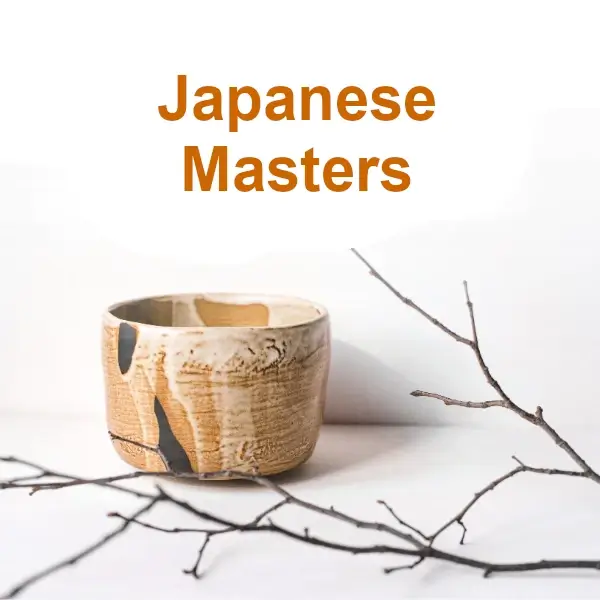The Masterful Legacy of Kakiemon Lineage
The lineage of Kakiemon Sakaida, beginning with the founder in the early 17th century, represents a rich tradition of Japanese porcelain artistry, known for its distinctive milky-white nigoshide glaze and vibrant overglaze enamel decorations. Here’s an overview of the notable Kakiemon ceramists across the generations:
Kakiemon I (Sakaida Kizaemon, 1596-1666)
Kakiemon I, also known as Sakaida Kizaemon, was born in 1596. He is renowned for inventing the Kakiemon style of porcelain, which became highly influential both in Japan and in Europe. This style is characterized by its unique overglaze enameling on a milky white porcelain base, known as “nigoshide.”
Kakiemon I’s contributions to ceramic arts started after he reportedly learned the overglaze enameling technique from a Chinese artisan in Nagasaki in 1643, and he was the first in Japan to use this method. His innovative techniques led to the creation of porcelain wares that were highly esteemed by European aristocracy during the 17th century
Master ceramist Kakiemon II
Kakiemon II continued the work of his predecessor and father, maintaining the high quality and distinct style of the Kakiemon porcelain. Little detailed historical documentation about his contributions exists, but he played a vital role in the family’s succession.
Kakiemon III
Kakiemon III further solidified the reputation of Kakiemon ware, often enhancing techniques and perhaps expanding the range of designs. Like many of his forebears and successors, detailed records of his life are sparse but his work helped sustain the family’s artistic legacy.
A new japanese potter to the lineage: Kakiemon IV
Kakiemon IV was a prominent figure during what is often considered the golden age of the Kakiemon Kiln, spanning from his lifetime in 1641 to 1679. During his tenure, he played a significant role in refining the distinctive Kakiemon style of porcelain, with the using of “nigoshide”.
This period was marked by an increased demand for these exquisite porcelains, not only in Japan but across Europe, where they were prized by royalty and nobility.
Kakiemon IV, along with Kakiemon V, oversaw the kiln during a time of flourishing artistic output and were responsible for many innovations in porcelain manufacturing techniques and styles. Their work included the production of items with complex overglaze enamels, which became highly acclaimed in both domestic and European markets
The lineage from Kakiemon IV to Kakiemon XIII
The lineage of Kakiemon ceramists from Kakiemon IV to Kakiemon XIII has seen a remarkable continuation and evolution of their distinct porcelain style, marked by significant contributions from each generation.
Kakiemon V (1660-1691)
Continued the legacy, but his life was cut short at age 31. Despite his brief period, he left detailed instructions for his successors, which helped in maintaining the continuity and quality of the Kakiemon style.
From Kakiemon VI to Kakiemon XI
The subsequent generations experienced a decline in the popularity of their traditional style, and details about these generations are less documented. However, they played crucial roles in maintaining the Kakiemon family’s techniques and artistic legacy during quieter times for the kiln.
Kakiemon XII (1878-1963)
Revitalized the kiln by winning significant awards and being recognized officially for his craftsmanship. He played a key role in the revival of the nigoshide technique, which had been lost over generations. This revival came around the 300th anniversary of the birth of Kakiemon I, bringing renewed attention and prestige to the Kakiemon name.
Kakiemon XIII (1906-1982)
Japanese master Kakiemon XIII was born as Sakaida Shibuo, contributed significantly by establishing the Kakiemon Ceramics Technology Preservation Society in 1971, to preserve their traditional techniques. He was honored for his work with a comprehensive designation of the nigoshide technique as an important intangible cultural property.
The Legend of Kakiemon Sakaida XIV
Kakiemon Sakaida XIV, also known as Sakaida Masashi, was born on August 26, 1934 and passed away on June 15, 2013. This Japanese master potter, heir to the 14th generation of the Kakiemon family, continued the tradition of Kakiemon glazed ware. He assumed the mantle of his father, Kakiemon XIII, in 1982, and took Kakiemon porcelain to new horizons, combining ancestral technique with modern innovations.
Sakaida Kakiemon XV, born in 1968, currently heads the Kakiemon studio. He took on the Kakiemon name in 2014, continuing the family tradition with modern sensibilities. His tenure has included numerous accolades and responsibilities, such as presiding over the Preservation of Important Intangible Cultural Property Group and membership in various ceramic art associations
These ceramists not only preserved the family’s traditional craftsmanship but also adapted their artistic expressions to meet changing tastes and technologies, ensuring the legacy of the Kakiemon name through centuries. Each generation added their unique touch to the evolving Kakiemon style, thereby maintaining its relevance and cherished status in both Japanese and international art circles.
List of Japanese master ceramists
In an attempt to give recognition to the master ceramists of Japan, we have made a series of biographical articles, you can access them through this drop-down list.
We hope this will help to spread the beautiful tradition of Japanese pottery.
It will help us if you share on social media:
Other posts about Japanese pottery:





